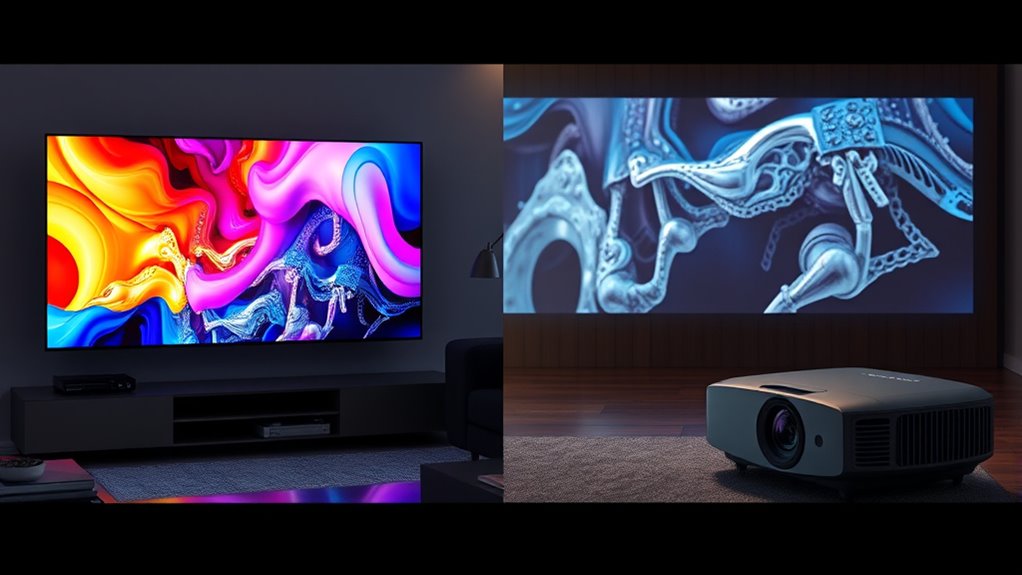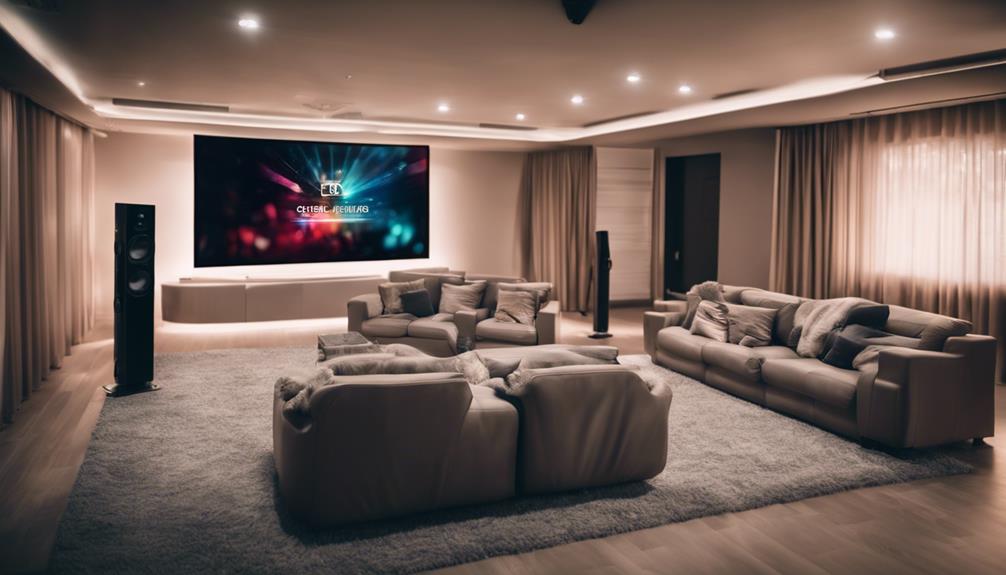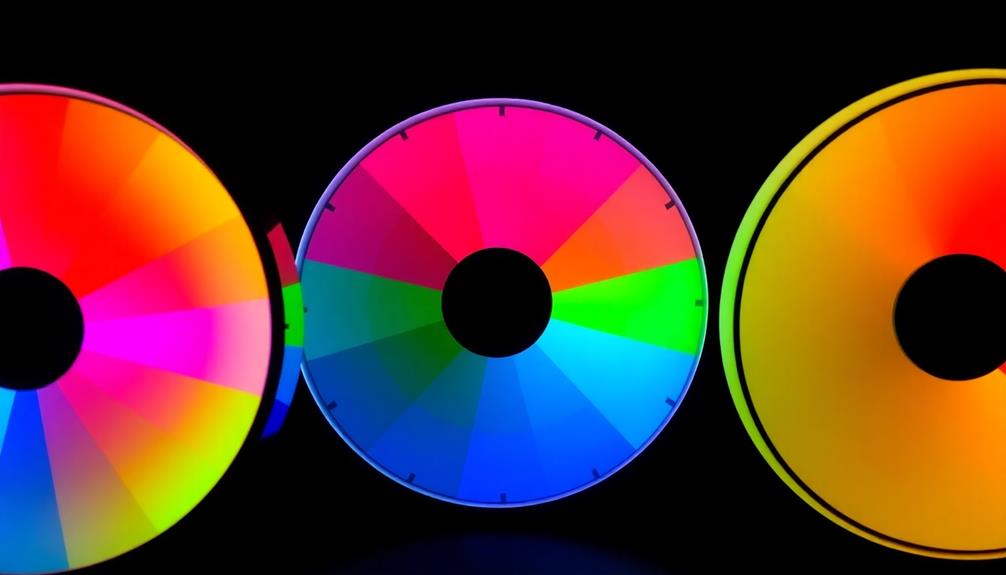AI upscaling on TVs and projectors genuinely improves your viewing experience by turning lower-resolution content into near-4K quality. It makes images sharper, more detailed, and vibrant, reducing fuzziness and pixelation, especially on larger screens. While it doesn’t create true 4K from poor sources, it enhances clarity and color accuracy considerably. If you want to understand how this technology works and what to expect, there’s more to explore below.
Key Takeaways
- AI upscaling enhances image details and sharpness, making lower-resolution content appear clearer on larger screens.
- It reduces fuzziness, pixelation, and noise, resulting in more vibrant and visually appealing images.
- While it improves perceived quality, it doesn’t convert low-quality videos into true 4K resolution.
- Effectiveness varies based on source material and AI implementation; over-aggressive upscaling can cause artifacts.
- Ongoing AI advancements are making real-time, seamless upscaling more natural and widely integrated into modern TVs and projectors.

AI upscaling has revolutionized how you experience visual content on TVs and projectors by enhancing lower-resolution images to near-4K quality. Instead of settling for blurry or pixelated footage, you now get sharper, more detailed images that make your viewing experience much more immersive. When you watch old movies, streamed videos, or even live broadcasts, AI algorithms analyze each frame, filling in missing details and smoothing out rough edges. This process makes it seem as if you’re viewing higher-quality content, even when the original source is far from 4K.
AI upscaling enhances lower-resolution images to near-4K, creating sharper, more immersive viewing experiences.
You might notice that AI upscaling is especially noticeable on larger screens. As the size of your TV or projector increases, the importance of resolution becomes more apparent. Without AI enhancement, lower-resolution content can look fuzzy or pixelated, but with AI upscaling, those issues are markedly reduced. The technology works by examining the image’s pixels, recognizing patterns, and predicting what the finer details should look like. This predictive process creates a more realistic picture that retains the original content’s essence while adding clarity.
The benefits go beyond just resolution. AI upscaling can also improve color accuracy, contrast, and sharpness. It intelligently enhances the overall picture quality by reducing noise and artifacts that might have been present in older recordings or compressed digital streams. As a result, you get a cleaner, more vibrant image that feels more lifelike. This makes watching movies or sports more engaging since you don’t have to strain to see details or ignore distracting distortions.
However, it’s important to understand that AI upscaling isn’t magic. It doesn’t turn a low-quality video into true 4K, but it gets quite close in appearance. The technology relies on complex algorithms trained on vast datasets, which means results can vary depending on the source material and the specific AI implementation in your device. Sometimes, overly aggressive upscaling can produce artifacts or a slightly artificial look, especially if the original content is very poor quality. Still, in most cases, the improvements are noticeable and worth the upgrade.
Additionally, as AI continues to advance, it is increasingly integrating on-device AI capabilities to improve processing efficiency and reduce latency, making real-time upscaling even more seamless.
Frequently Asked Questions
Does AI Upscaling Work With All Types of Content?
You’re wondering if AI upscaling works with all types of content. It generally improves the quality of lower-resolution videos like older movies, streaming shows, and gaming footage by enhancing details and sharpness. However, it may not perform as well with highly compressed or already high-resolution content, sometimes introducing artifacts or over-sharpening. So, while it boosts many formats, its effectiveness depends on the original content’s quality and resolution.
How Does AI Upscaling Affect Motion Clarity?
When considering how AI upscaling affects motion clarity, you’ll notice smoother visuals and fewer blurs during fast-paced scenes. It intelligently analyzes motion, filling in gaps to create sharper, more fluid movement. This process reduces flickering and judder, giving you a more immersive viewing experience. However, in some cases, AI might introduce artifacts or over-smoothing, so your results depend on the quality of the technology and content.
Can AI Upscaling Cause Any Visual Artifacts?
Did you know that around 15% of viewers report noticing visual artifacts with AI upscaling? You might see issues like ringing, halos, or noise, especially if the upscaling isn’t perfectly tuned. While AI enhances detail, it can sometimes create these distortions, making images look unnatural. So, yes, AI upscaling can cause artifacts, but high-quality models aim to minimize these effects for a cleaner picture.
Is AI Upscaling Worth the Extra Cost?
You might wonder if AI upscaling is worth the extra cost. If you value sharper images and a better viewing experience, it’s likely worth it. AI upscaling enhances lower-resolution content, making it look closer to 4K or even 8K quality. While it may not be perfect, the improvements are noticeable enough to justify the investment, especially if you watch a lot of HD or lower-resolution content.
How Does AI Upscaling Compare to Native 4K?
Imagine a mirror that makes everything look crystal clear—AI upscaling does just that, but how does it compare to native 4K? You’ll notice AI-enhanced images are sharper and more detailed than standard HD, yet they still don’t quite match true 4K quality in resolution. It’s a helpful upgrade, especially on lower-resolution content, but native 4K remains the gold standard for absolute clarity and detail.
Conclusion
In the end, AI upscaling can genuinely enhance your viewing experience, making lower-resolution content look sharper and more detailed. Did you know that some AI algorithms can improve image quality by up to 30%? While it’s not perfect, it’s a significant step forward in home entertainment. So, if you want crisper images without upgrading your hardware, AI upscaling is definitely worth trying out. Just keep your expectations realistic, and enjoy the visual improvements it brings.















